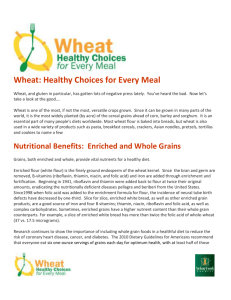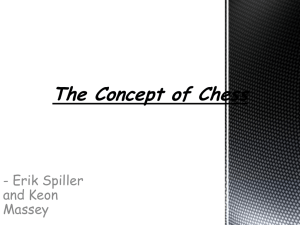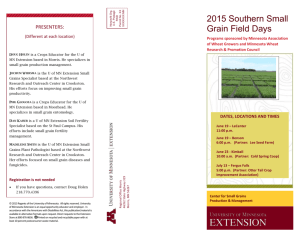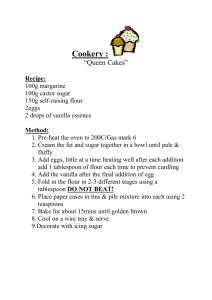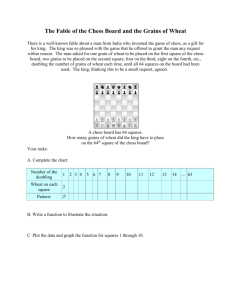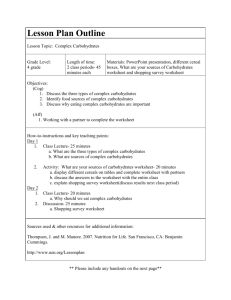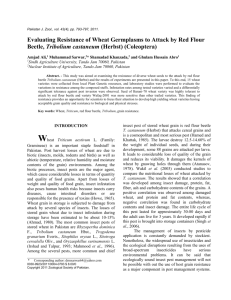What's Complex About Carbohydrate
advertisement
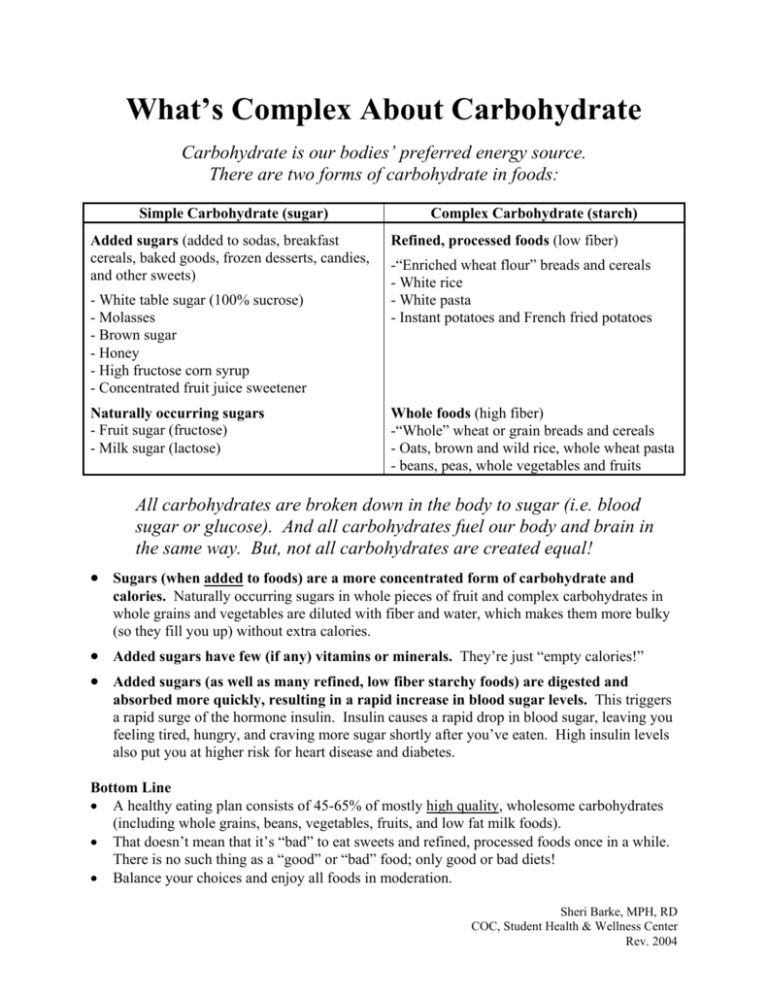
What’s Complex About Carbohydrate Carbohydrate is our bodies’ preferred energy source. There are two forms of carbohydrate in foods: Simple Carbohydrate (sugar) Added sugars (added to sodas, breakfast cereals, baked goods, frozen desserts, candies, and other sweets) - White table sugar (100% sucrose) - Molasses - Brown sugar - Honey - High fructose corn syrup - Concentrated fruit juice sweetener Naturally occurring sugars - Fruit sugar (fructose) - Milk sugar (lactose) Complex Carbohydrate (starch) Refined, processed foods (low fiber) -“Enriched wheat flour” breads and cereals - White rice - White pasta - Instant potatoes and French fried potatoes Whole foods (high fiber) -“Whole” wheat or grain breads and cereals - Oats, brown and wild rice, whole wheat pasta - beans, peas, whole vegetables and fruits All carbohydrates are broken down in the body to sugar (i.e. blood sugar or glucose). And all carbohydrates fuel our body and brain in the same way. But, not all carbohydrates are created equal! • Sugars (when added to foods) are a more concentrated form of carbohydrate and calories. Naturally occurring sugars in whole pieces of fruit and complex carbohydrates in whole grains and vegetables are diluted with fiber and water, which makes them more bulky (so they fill you up) without extra calories. • Added sugars have few (if any) vitamins or minerals. They’re just “empty calories!” • Added sugars (as well as many refined, low fiber starchy foods) are digested and absorbed more quickly, resulting in a rapid increase in blood sugar levels. This triggers a rapid surge of the hormone insulin. Insulin causes a rapid drop in blood sugar, leaving you feeling tired, hungry, and craving more sugar shortly after you’ve eaten. High insulin levels also put you at higher risk for heart disease and diabetes. Bottom Line • A healthy eating plan consists of 45-65% of mostly high quality, wholesome carbohydrates (including whole grains, beans, vegetables, fruits, and low fat milk foods). • That doesn’t mean that it’s “bad” to eat sweets and refined, processed foods once in a while. There is no such thing as a “good” or “bad” food; only good or bad diets! • Balance your choices and enjoy all foods in moderation. Sheri Barke, MPH, RD COC, Student Health & Wellness Center Rev. 2004 Picking Whole Grains What is a whole grain? • A whole grain has four parts: germ (the nutrient rich inner part), endosperm (the soft white, starchy inside portion), bran (the fibrous coating around the grain), and husk (the outer inedible shell). What is refinement? • Refinement is the process that removes all but the endosperm portion of the grain, leaving a white, nutrient-poor, refined flour. What is enrichment? • Enrichment is the process that adds back 5 nutrients to the white, refined flour: iron, thiamin, riboflavin, niacin, and folic acid. All the other nutrients from the whole grain (e.g. magnesium, zinc, vitamin B6, chromium, vitamin E, and fiber) are still lost. Un-refined whole grains are best. Use these guidelines to make sure you are really getting whole grains. Wheat: “Wheat flour” is a generic term for any flour made from wheat. • Cracked wheat, stoned wheat, wheatberry, 100% wheat, seven grain, multi grain -- All are made from mostly refined grains, not whole grains. • Best Bites: Look for the word “whole” before grain or wheat on the label. It should be the first ingredient listed. Rye and Pumpernickel: These usually contain little, if any, whole grains. Oats: Always whole grain, except in oatmeal bread. The first ingredient in these breads is usually “refined wheat flour.” Oats come way down on the ingredient list. Rice: Brown and wild rice are whole grain. White is not. Other whole grains to try: bulgar wheat, whole wheat cous cous... Sheri Barke, MPH, RD COC, Student Health & Wellness Center Rev. 2004

